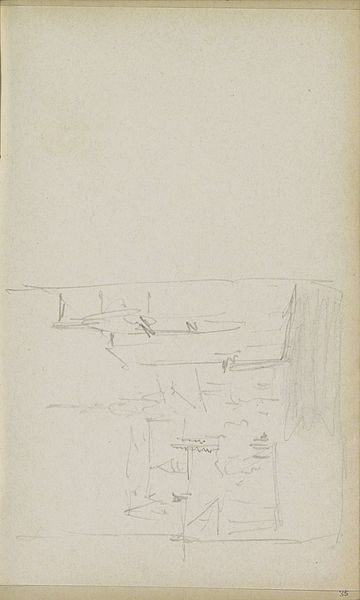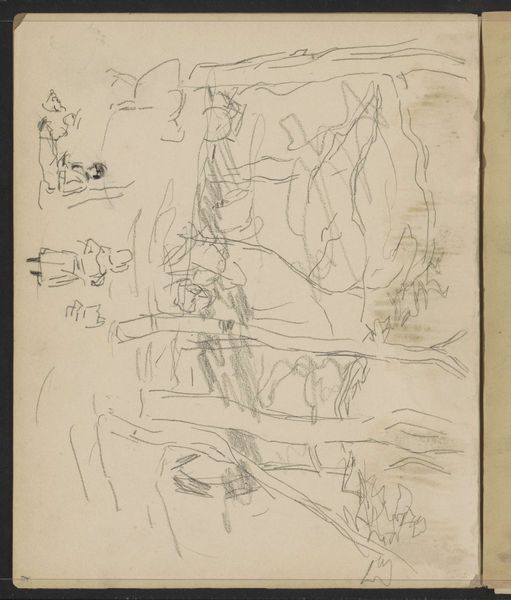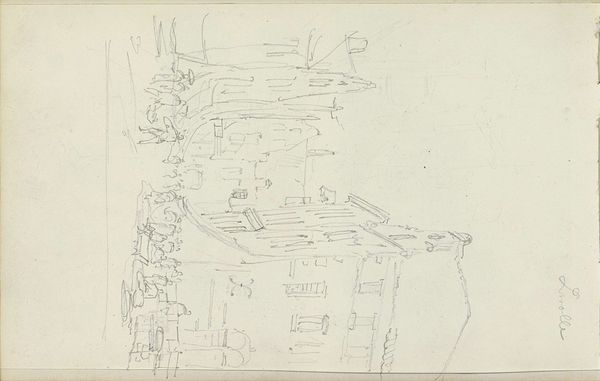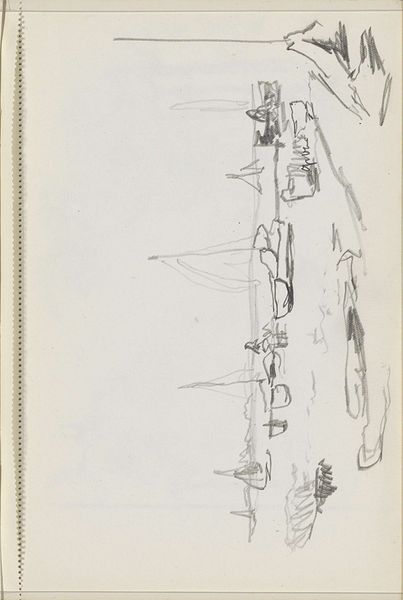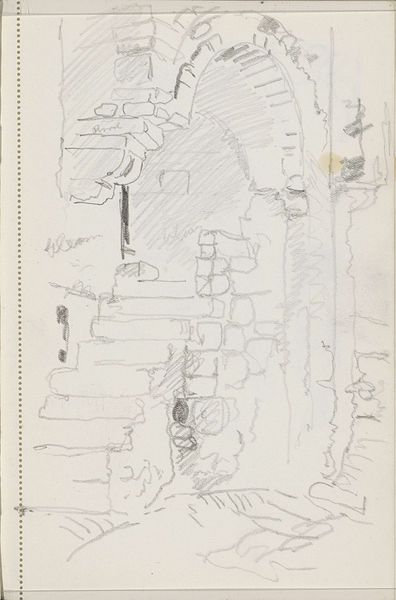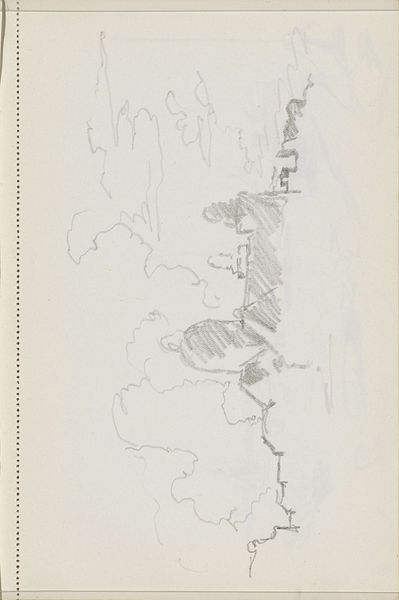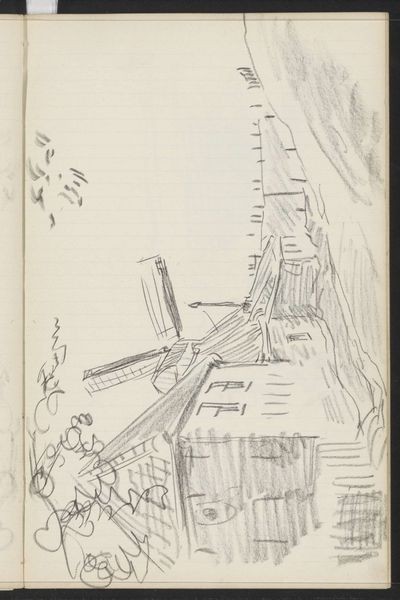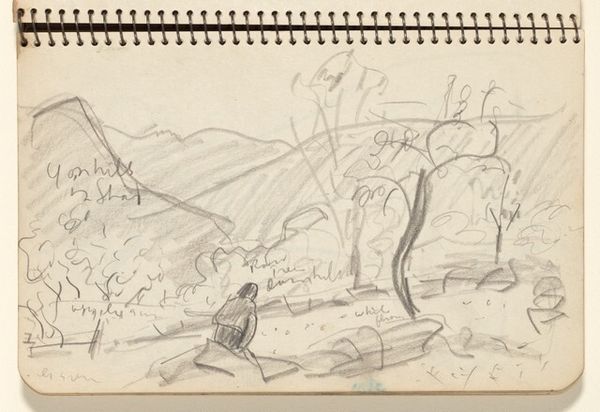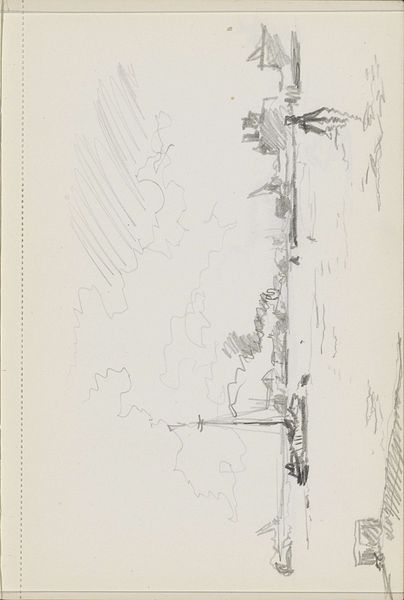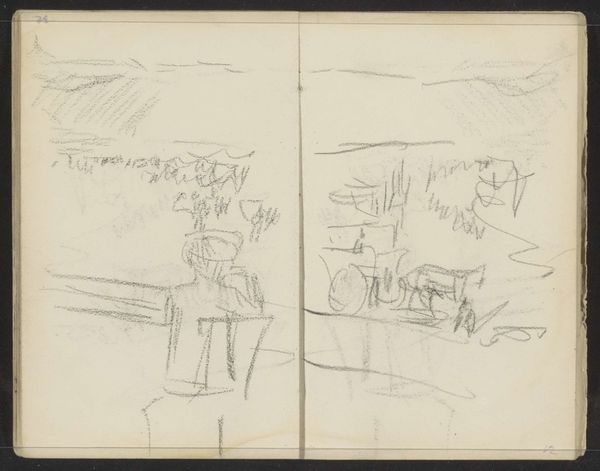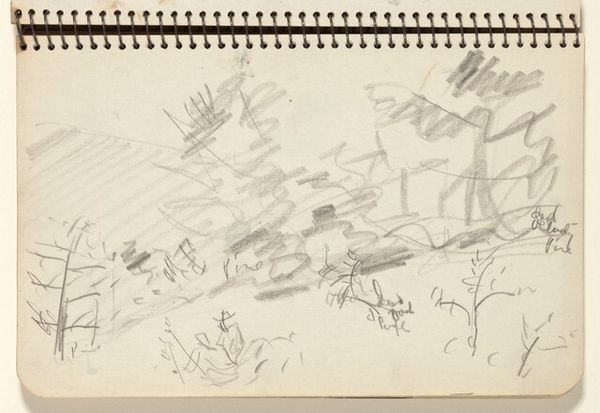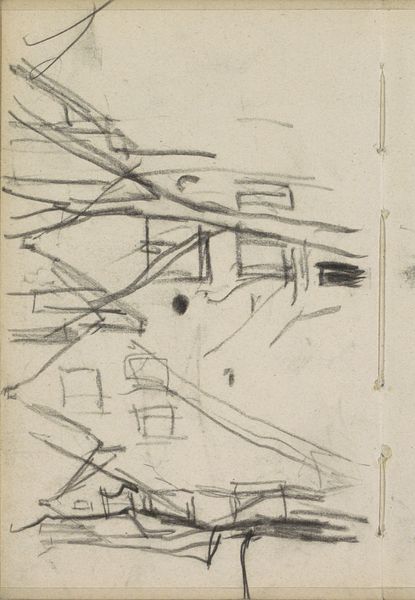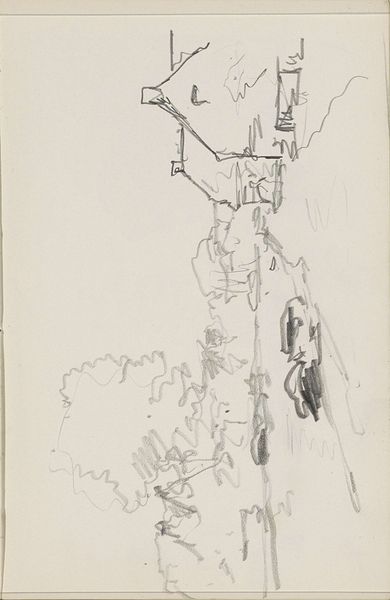
drawing, paper, pencil
#
drawing
#
comic strip sketch
#
ink paper printed
#
hand drawn type
#
paper
#
personal sketchbook
#
ink drawing experimentation
#
pen-ink sketch
#
pencil
#
pen work
#
sketchbook drawing
#
cityscape
#
storyboard and sketchbook work
#
sketchbook art
Dimensions: sheet: 35.56 × 27.94 cm (14 × 11 in.) book: 35.56 × 27.94 × 1.27 cm (14 × 11 × 1/2 in.)
Copyright: National Gallery of Art: CC0 1.0
Curator: Let's discuss Saul Steinberg's "Study for 'Untitled (Las Vegas)'", dating back to around 1986. It's a drawing in pencil and ink on paper. My initial reading is that the work seems like a sardonic commentary on the myth-making involved in city building, but I’m eager for your insights into its material construction. Editor: Right away, what strikes me is the looseness of the sketch – you can almost feel Steinberg's hand moving across the paper. It reminds me of urban planning documents but subverted by his characteristic whimsy. How does his playful style play into the wider discussion around architecture? Curator: Steinberg’s lighthearted, illustrative aesthetic deliberately deflates any grandiose, authoritative reading of the cityscape. There's a satirical lens here: anthropomorphic forms meld with architectural tropes, challenging our idealized perception of urban design and, implicitly, the narratives embedded within. Think about the role of Las Vegas as an imagined place of endless opportunity. Editor: That connects directly to the means of production, doesn't it? This looks like something sketched directly into a notebook, quickly capturing impressions before they’re lost. The deliberate amateurism emphasizes process and immediacy. Curator: Exactly! The visible construction resists any notion of timelessness or monumentality, drawing attention instead to the artifice behind places that appear solid. Notice how perspective warps—creating an ambiguous sense of depth and challenging perceptions about space and hierarchy within the composition and the societal assumptions the artist seeks to dismantle. Editor: I'd add that the very ephemerality of sketch emphasizes labor—his labor. We are faced not with the grand result, but with evidence of artistic and intellectual labor. It humanizes the depiction. It’s raw and revealing, less a polished product and more like a fleeting glimpse into the creative process itself. Curator: I agree. Steinberg exposes the creative thought, stripping back pretenses from these imagined structures. I see it ultimately as an expression of postmodern anxieties around authenticity and the built environment. Editor: I find myself appreciating the raw quality of these sketched elements and considering their place in Steinberg’s wider artistic project of revealing art-making processes and celebrating creative freedom. Curator: Thank you, this approach reframes Steinberg's critique beyond the social towards its roots in the means and values of labor itself.
Comments
No comments
Be the first to comment and join the conversation on the ultimate creative platform.
